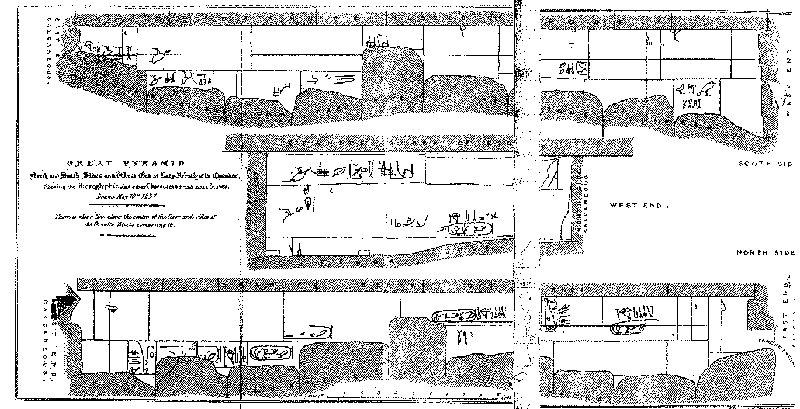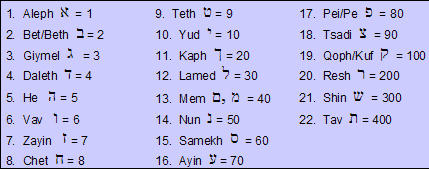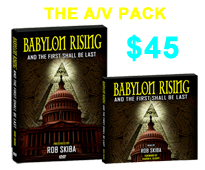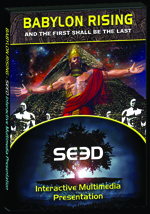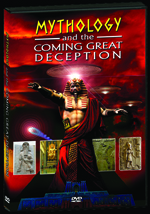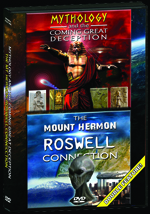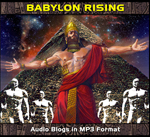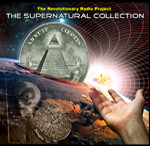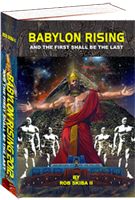
The following information is part of a brand new blog series called:
The Great Pyramid, Babylon and the Commandments of Eden
written by Rob Skiba II
© 2014
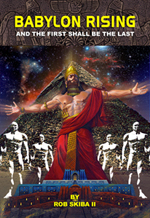 |
The Great Pyramid PART 3: Why Giza? |
COMING SOON! |
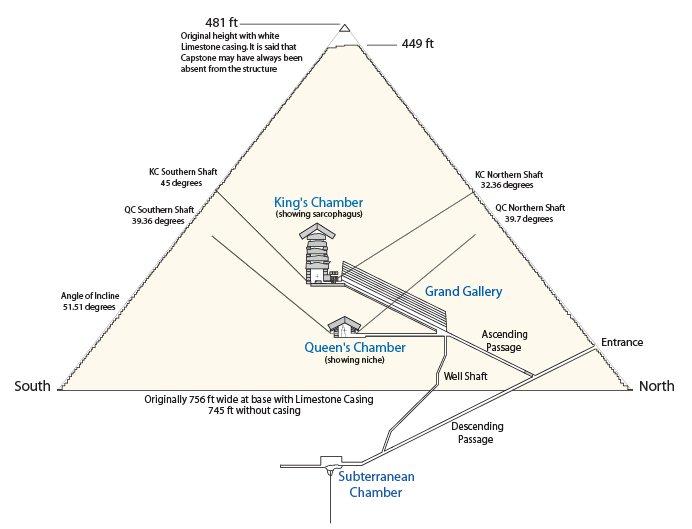
Take the time to really study what you are seeing in the diagram above. It is nothing short of extraordinary! For more interesting facts, check out the information presented here:
http://www.ancient-wisdom.co.uk/Ghizaarchitecture.htm
It is understandable that so much confusion surrounds the Great Pyramid, considering the availability of such a wealth of confusing and conflicting facts. It is a common practice in archaeology to propose the function, method of construction, age and builders through the design features of the building. In the case of this pyramid however, which has been surrounded by myth and speculation since the earliest of times, a bridge across the border of fact and fiction has materialised, hindering the journey of seekers of truth. This page is presented without the prejudice of previous reports and literature, in order that the design features of the interior speak for themselves.
- Excerpt from the above website, under the heading, Architectural Analysis of the Great Pyramid
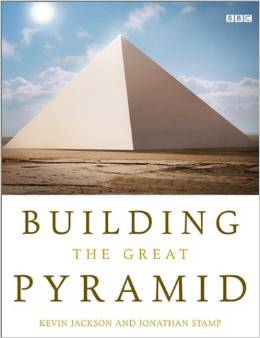 In Part 1, I more or less cut to the chase, bypassing the "standard view" of Egyptology, which states that the Great Pyramid was built by an ancient Pharaoh named Khufu. The following is typically what you hear from those who subscribe to the standard view:
In Part 1, I more or less cut to the chase, bypassing the "standard view" of Egyptology, which states that the Great Pyramid was built by an ancient Pharaoh named Khufu. The following is typically what you hear from those who subscribe to the standard view:
This ruler came to the throne of Egypt in about 2551 BC, inheriting it from his father Sneferu, who may well have reigned as long as half a century. Although there are still disputes and uncertainties about exact datings, the history of ancient Egypt is conventionally divided by modern historians into thirty or thirty-one Dynasties, beginning around 3100 BC and ending in 332 BC. Sneferu was the first king of the IVth Dynasty (2575-2465 BC) and Khufu the second. Historians have also arranged the various dynasties into nine main periods; the second of these is known as the Old Kingdom, runs from 2686 to 2181 BC and is made up of the IIIrd, IVth, Vth and VIth Dynasties.
- Kevin Jackson and Jonathan Stamp, Building the Great Pyramid
,
pg. 15 [emphasis mine]
The first thing we must recognize is that no matter who you are reading on this subject, it certainly appears they are either guessing and pulling these dates out of thin air or quoting someone else who was. While it is true the dates do vary, the above seems to be the "conventional" thinking.
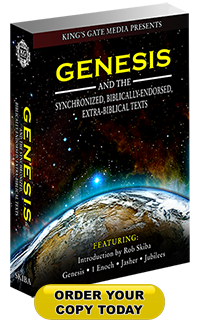 There must be a standard upon which we gauge truth. When I do my research, I proceed with the idea that the canonized text of the Bible is the ultimate authority. From there, I branch out to what I like to refer to as the "Synchronized Biblically-Endorsed, Extra-Biblical Texts," (which include the books, 1 Enoch, Jasher and Jubilees) then to contemporary commentaries on the above, followed by generally recognized authoritative texts such as the works of Josephus or those of the so-called early "Church Fathers" who are in agreement with the above. Finally, I explore texts that are outside of the realm of the Biblical writings and those associated with them. When I find things that disagree with and/or contradict the canonized text, I prefer to consider them not as reliable in terms of truth.
There must be a standard upon which we gauge truth. When I do my research, I proceed with the idea that the canonized text of the Bible is the ultimate authority. From there, I branch out to what I like to refer to as the "Synchronized Biblically-Endorsed, Extra-Biblical Texts," (which include the books, 1 Enoch, Jasher and Jubilees) then to contemporary commentaries on the above, followed by generally recognized authoritative texts such as the works of Josephus or those of the so-called early "Church Fathers" who are in agreement with the above. Finally, I explore texts that are outside of the realm of the Biblical writings and those associated with them. When I find things that disagree with and/or contradict the canonized text, I prefer to consider them not as reliable in terms of truth.
In the case of the Great Pyramid, I believe there is sufficient evidence in the canonized text, the Biblically-endorsed text of 1 Enoch and the writings of Josephus, which support the idea that the Great Pyramid was created before the Flood, by members of the family of Seth. Do these writings agree with the standard view of Egyptology? Well, the stated timing of roughly 2560–2540 BC does seem right to me. If so, it was during a very chaotic time a little more than 200 years before the Flood that the Great Pyramid was built. But how do we know Khufu was the builder or the one for whom the Great Pyramid was meant to honor? Are you ready? Ancient, hidden graffiti is all the proof we have!
On the Wikipedia entry for the Great Pyramid, we can see:
Based on a mark in an interior chamber naming the work gang and a reference to fourth dynasty Egyptian Pharaoh Khufu,[1]. Egyptologists believe that the pyramid was built as a tomb over a 10 to 20-year period concluding around 2560 BC.
- Wikipedia
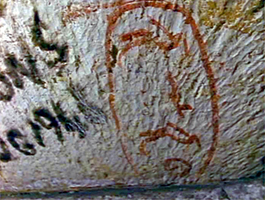 Much like the only proof we had that Muslim terrorists allegedly flew planes into the World Trade Centers on 9/11 came from PAPER passports - and not just any passports mind you, but the passports of the terrorists (imagine the luck) - which apparently survived the massive explosion and steel-melting fire, which supposedly brought the Twin Towers down in a pile of ash in their own footprints defying all known laws of physics, we are supposed to believe that the most incredible stone structure on the planet was built by/for a Pharaoh named Khufu because of this graffiti that was apparently found scibbled on a wall way up above the King's Chamber.
Much like the only proof we had that Muslim terrorists allegedly flew planes into the World Trade Centers on 9/11 came from PAPER passports - and not just any passports mind you, but the passports of the terrorists (imagine the luck) - which apparently survived the massive explosion and steel-melting fire, which supposedly brought the Twin Towers down in a pile of ash in their own footprints defying all known laws of physics, we are supposed to believe that the most incredible stone structure on the planet was built by/for a Pharaoh named Khufu because of this graffiti that was apparently found scibbled on a wall way up above the King's Chamber.
In an on-line interview with Mark Lehner an archeologist from the Oriental Institute of the University of Chicago and Harvard Semitic Museum, recorded for NOVA, he said:
One of the most compelling pieces of evidence we have is graffiti on ancient stone monuments in places that they didn't mean to be shown....
You come to a block of stone in the relieving chambers above the King's chamber. First of all, you see this cartouche of a King and then some scrawls all in red paint after it. That's the gang name. And in the Old Kingdom in the time of the Pyramids of Giza, the gangs were named after kings. So, for example, we have a name, compounded with the name of Menkaure, and it seems to translate "the Drunks (or the Drunkards) of Menkaure." There's one that's well-attested, in the relieving chambers above the King's chamber in the Great Pyramid, "the Friends of Khufu Gang."
- Mark Lehner [2]
This is where the graffiti was found:
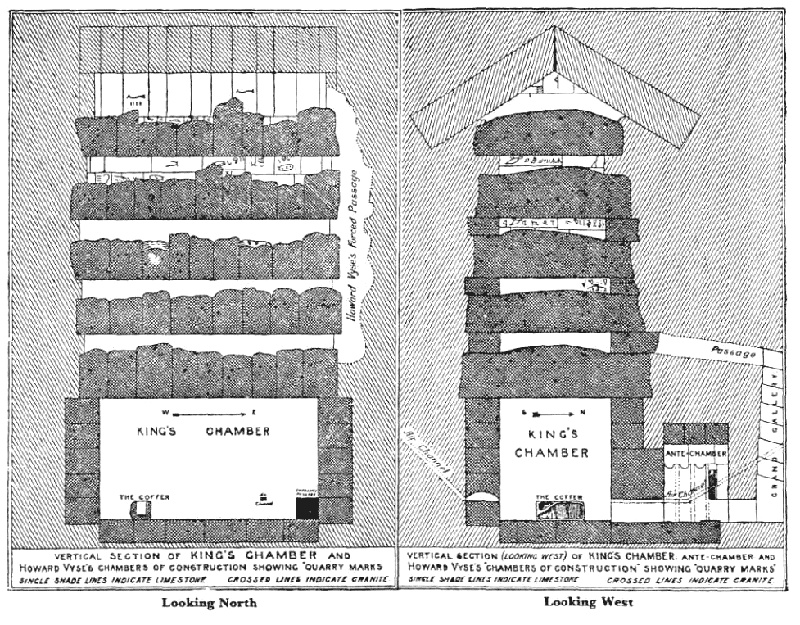
Here is a detailed drawing of the graffiti:
OK. Think this through: We know that the Pharaoh's of Egypt had massive egos. There are lots of hieroglyphs depicted who did what and who should be honored for what all over the place in Egypt! And yet, here we have, arguably, the most amazing structure ever built, supposedly in honor of the Pharaoh Khufu, and the only inscription that would indicate the Great Pyramid was for him is graffiti hidden way up inside a relieving chamber, where no one would ever see it?? Come on! Seriously? Yet the "official story" drones on in just about everything you read concerning the Great Pyramid's origin:
The Old Kingdom was the golden age of pyramid building, which is why it is sometimes referred to as the Pyramid Age. As we shall soon see in greater detail, the earliest forms of the pyramid, known as step pyramids, started to be erected in the IIIrd Dynasty under a king named Djoser (2630-2611 BC). True pyramids did not emerge until the reign of Sneferu, which means that Khufu's builders were working with an extremely novel form of architecture: one calculation has it that barely sixty years elapsed between the completion of Djoser's pyramid and the beginning of Khufu's, which means that someone who was a child in Djoser's reign could, with luck and good health, have watched the first stones being put in place at Giza. Khufu's own monument - the largest and most extraordinary that Egypt would ever see - was soon joined by the smaller but nonetheless gigantic pyramid built near his own at Giza by his son Khafre (also known as Chephren: 2520-2494 BC), and then by one conciderably smaller still, although in any other surroundings it would seem highly imposing, built by his grandson Menkaure (also known as Mycerinus: 2490-2472 BC).
Menkaure's pyramid was the last to flourish of the art for the IVth Dynasty, and although the Vth and VIth Dynasty rulers also built a number of pyramids, they were on a much more modest scale. After this, in the time known as the First Intermediate Period pyramid building virtually ceased, and was not revived until the Middle Kingdom (2040-1640 BC) and then only fitfully.
In all, about ninety pyramids have survived to the present day in one form or another, although some of them are little more than rubble-strewn sites, their original forms unidentifiable save to the trained eye.
- Kevin Jackson and Jonathan Stamp, Building the Great Pyramid
,
pg. 15 and 16 [emphasis mine]
I know we live in an age where learned men of science dogmatically believe they came from apes, and people, no matter how much evidence you show them, will still insist on the "official story" that was fed to them by the government sponsored media propaganda concerning 9/11 or the Kennedy assassination, so nothing really surprises me anymore. But, I'm sorry, I'm not drinking this Cool-Aid and I'm not the only one who doubts the official story in any of the above mentioned cases.
Consider these facts:
It has been shown (with the exception of the 'well'-shaft, 'star' shafts and other minor features), that the architectural design features of the Great pyramid are contemporary with those seen at other 'Memphite' pyramids in the region. However, when viewed together, the normal evidence of the steps required to achieve such an imaginative process are lacking, and neither the physical construction nor the social philosophy behind it have no historical precedent in Egypt. This fact has frequently led people to suggest that the construction of the Giza pyramids (and therefore, all early dynasty Egyptian pyramids), show an external influence as yet unidentified. While there is little argument that they were constructed in the time of the fourth dynasty pharaohs, the influences in design and construction are debated.
The delicate distinction between evidence and proof appears to be the reason why it has been so hard to determine the pyramids builder exactly...
* * *
One of the few other written references to Khufu is contained on the 'inventory stele', discovered at Giza in the 1850s. It commemorates the restoration by Khuf... of a small temple near the Pyramid, and indicates that the Sphinx, the Sphinx Temple, and possibly the Great Pyramid itself, were already in existence in his day. The stele is written in a later style of writing and whereas some Egyptologists regard it as a copy of a 4th dynasty original, others consider it to be an original Saite product. Either way, it contradicts the idea that the sphinx was built by Khafre, who ruled after Khufu.
Egyptologists currently believe Hemiunu (fl. 2570 BC) to be the architect of the Great pyramid. He was the son of Nefermaat, a relative of Khufu. Archaeologists have found mentions of Hemiunu with titles roughly translated as Master of works and Vizier. His tomb lies close to Khufu's pyramid, and contains reliefs of his image. Some stones of his mastaba are marked with dates referring to Khufu's reign.
For the second pyramid (Khafre's), and quoting Petrie - 'The only monumental evidences are the pieces of a bowl and a mace head with his name found in the temple (east) of this pyramid' . And from Fix - 'Statues of Khafre have been found in the vicinity, but Khafra - whom Petrie thought reigned from 3908-3845 BC. - was, like Khufu and Menkaure, also worshipped in later times (Petrie, A History of Egypt, p.53) and there is now no way of telling whether the artefacts and statues bearing his cartouche are products of the pyramid age or a later era'.
And of the third pyramid, again from Fix - 'The third pyramid has been attributed to Menkaura only because Herodotus and Diodorus Siculus attributed it to him and because the name Menkaura was found written in red paint on the ceiling of a chamber of the three subsidiary pyramids south of the Third pyramid. (Edwards, The Pyramids of Egypt, p. 120). No such name was found in the third pyramid itself. It is quite likely that small pyramid is not contemporary with the third pyramid'
The lack of concrete evidence for the constructions at Giza explains why people have been forced to recognise (Petrie, Breasted, Edwards, etc), that beyond the traditional association between the Giza complex and the fourth dynasty Pharaohs, there is very little actual evidence regarding the extent of the 4th dynasty works at Giza. In fact, it has been suggested that the 4th dynasty were simply building over an already 'sacred' place, which shows signs of use since at least the 1st dynasty.
Conclusions
-
Most of the known royal members of the 4th dynasty are represented by cartouche at Ghiza.
-
Apart from Khufu's pyramid, the other two larger pyramids have no other 'markings' in them to identify their builders.
-
The 'inventory' Stella suggests that the Sphinx (and valley temple) were built before Khufu's reign.
-
There are two different cartouches in the 'relieving chambers'.
-
They appear to be original features of the pyramid.
-
The cartouche from Vyses' 'Materia Hieroglyphica' reads 'Ra-ufu', (with a plain solar disc).
-
The cartouche Vyse describes from the pyramid has three lines in the solar disc (and two extra 'symbols'). The names upon them have been variously translated as: Khufu and Khnumu-Khufu, Shufu and Nem-Shufu,, Shofo' and 'Noum-shofo', Nh-Shufu, and Shu-Shufu .
-
The same two cartouches have been found together at 5 other sites in Egypt.
-
In the pyramid, they do not appear side by side.
-
The Abydoss cartouche reads as 'Ra-ufu',
-
The 'Khnoum-Khufu' cartouche does not appear on any kings-list.
-
'Khnoum-Khufu' appears more frequently than 'Khufu'.
-
The 'Khnoum' section is a prefix, composed of two symbols: a Ram's head and a Jug. There is no consensus over the interpretation of these symbols.
-
The different King-lists appear to originate from a common source.
-
Manetho states that the fourth dynasty builders were of a different race.
-
The earliest accounts (Manetho, Herodotus, Diodorus), associate the 'Hyksos' or 'Shepherd-kings with a 'shift' in power/religion at the time of Khufu and Khafre.
-
The Hyksos came from the East. <
-
Herodotus said that the people detested the memory of Choeps and Chephren.
-
The Hyksos were said to have left to create Jeru-salem.
-
There is a similarity in the style of construction between Giza and early foundation stones at Jerusalem.
- There are similarities between the early Mesopotamian (Sumerian), civilisation and early dynastic Egypt.
- Sourced from: http://www.ancient-wisdom.co.uk/Ghizawho.htm#3.22
If we can dispense with the absurd notion that the Great Pyramid was built by and/or for some Pharaoh to serve as his memorial site, we can get on to the business of trying to figure out what its real purpose and function was. I recommend you spend the time reading all of the above article if you are curious as to the facts concerning who did and who did not build the Great Pyramid and its counterparts on the Giza plateau. Suffice it to say, I believe in the account of Josephus, which appears to be backed by the account of 1 Enoch and as we shall soon see, I believe the prophets of the canonized texts as well. I'll leave it to the self-professed "evolved monkeys" with expensive letters after their names to debate the rest.
OK. Let's go a little deeper and see if the Great Pyramid is in fact the monument spoken of by the prophet Isaiah:
At that time, there will be an altar to the LORD of the Heavenly Armies in the heart of the land of Egypt, and a monument to the LORD at its border. - Isaiah 19:19 (ISV)
Now, I know many would say this passage is referring to either something set up in the days of Onias[4] or something yet to happen at some time in the future (as I cannot really see any true fulfillment of Isaiah 19:20-25 in history). The Pulpit Commentary has this to say concerning the closing verses of Isaiah 19:
Verse 25. - Whom the Lord of hosts bless; rather, forasmuch as the Lord of hosts hath blessed him. "Him" must be understood collectively, of the threefold Israel, spread through the three countries, which all partake of the blessing. The three countries are able to be a blessing to the world at large, because God's blessing rests upon them. Egypt my people. Egypt's great work in Jewish times, by which she became a blessing to the world, was her translation of the Hebrew Scriptures into Greek, commanded by Egyptian kings, and executed at Alexandria, the Egyptian capital. Neo-Platonism certainly owed much to this source. Stoicism probably something. Assyria the work of my hands. Assyria did no such work as Egypt. Neither the Targum of Onkelos nor the Babylonian Talmud can be compared for a moment with the Septuagint. Still the Mesopotamian Jews were a blessing to their neighbors. They kept alive in the East the notion of one true and spiritual God; they elevated the tone of men's thoughts; they were a perpetual protest against idolatry, with all its horrors. They, no doubt, prepared the way for that acceptance of Christianity by large masses of the population in Syria, Mesopotamia, Babylonia, and even in Persia, of which we have evidence in the ecclesiastical history of the first seven centuries. Israel mine inheritance (comp. Isaiah 47:6; Isaiah 63:17).
- Pulpit Commentary [3]
Other commentaries come to similar conclusions. But what if these passages have not yet been fulfilled entirely? What if the above is only partially true? Why would I say this? Well, as you continue reading in Isaiah, a lot of it appears to be in a Latter Day context. Look at the next few chapters:
Look! Here come riders, each man with a pair of horses!” They’re shouting out the answer: “Babylon has fallen, has fallen, and they have shattered all the images of her gods on the ground! - Isaiah 21:9 (ISV)
Is that the Old Testament parallel to what John wrote in the New Testament book of Revelation?
He cried out in a powerful voice, "Fallen! Babylon the Great has fallen! She has become a home for demons. She is a prison for every unclean spirit, a prison for every unclean bird, and a prison for every unclean and hated beast. - Revelation 18:2 (ISV)
Clearly John is writing in a Last Days context. Is Isaiah also writing in that same context? Consider...
1 Behold, the LORD maketh the earth empty, and maketh it waste, and turneth it upside down, and scattereth abroad the inhabitants thereof. 2 And it shall be, as with the people, so with the priest; as with the servant, so with his master; as with the maid, so with her mistress; as with the buyer, so with the seller; as with the lender, so with the borrower; as with the taker of usury, so with the giver of usury to him. 3 The land shall be utterly emptied, and utterly spoiled: for the LORD hath spoken this word. 4 The earth mourneth and fadeth away, the world languisheth and fadeth away, the haughty people of the earth do languish. 5 The earth also is defiled under the inhabitants thereof; because they have transgressed the laws, changed the ordinance, broken the everlasting covenant. 6 Therefore hath the curse devoured the earth, and they that dwell therein are desolate: therefore the inhabitants of the earth are burned, and few men left.
- Isaiah 24:1-6 (KJV)
As far as I can tell, this has not happened yet! Neither has this...
19 The earth is utterly broken down, the earth is clean dissolved, the earth is moved exceedingly. 20 The earth shall reel to and fro like a drunkard, and shall be removed like a cottage; and the transgression thereof shall be heavy upon it; and it shall fall, and not rise again. 21 And it shall come to pass in that day, that the LORD shall punish the host of the high ones that are on high, and the kings of the earth upon the earth. 22 And they shall be gathered together, as prisoners are gathered in the pit, and shall be shut up in the prison, and after many days shall they be visited. 23 Then the moon shall be confounded, and the sun ashamed, when the LORD of hosts shall reign in mount Zion, and in Jerusalem, and before his ancients gloriously.
- Isaiah 24:19-23 (KJV)
I could keep going, but I think you get the picture. If so much of the following chapters represent future events, which have not yet occurred, why should we not look at Isaiah 19 the same way? I do not see Egypt, Assyria (Babylon) and Israel as united with each other and in worship of YHWH at any time in history, do you? Let's look at the closing verses of Isaiah 19 again...
19 In that day shall there be an altar to the LORD in the midst of the land of Egypt, and a pillar at the border thereof to the LORD. 20 And it shall be for a sign and for a witness unto the LORD of hosts in the land of Egypt: for they shall cry unto the LORD because of the oppressors, and he shall send them a saviour, and a great one, and he shall deliver them. 21 And the LORD shall be known to Egypt, and the Egyptians shall know the LORD in that day, and shall do sacrifice and oblation; yea, they shall vow a vow unto the LORD, and perform it. 22 And the LORD shall smite Egypt: he shall smite and heal it: and they shall return even to the LORD, and he shall be intreated of them, and shall heal them.
23 In that day shall there be a highway out of Egypt to Assyria, and the Assyrian shall come into Egypt, and the Egyptian into Assyria, and the Egyptians shall serve with the Assyrians.
24 In that day shall Israel be the third with Egypt and with Assyria, even a blessing in the midst of the land: 25 Whom the LORD of hosts shall bless, saying, Blessed be Egypt my people, and Assyria the work of my hands, and Israel mine inheritance.
- Isaiah 19:19-25 (KJV)
If this can be applied to future events, what if the prophet is saying that in those Latter Days the Great Pyramid will be acknowledged as that structure, which represents YHWH? It does not say, "In that day there shall be built an altar/pillar." It just says there shall be one that will serve as a sign and witness unto YHWH in the land of Egypt. Again, I like the way the International Standard Version puts it:
At that time, there will be an altar to the LORD of the Heavenly Armies in the heart of the land of Egypt, and a monument to the LORD at its border. - Isaiah 19:19 (ISV)
The ISV and other translations use the word "monument" whereas the KJV and others use the word "pillar." The Jubilees Bible renders it:
In that day shall there be an altar to the LORD in the midst of the land of Egypt and a pyramid titled To the LORD at the border thereof. - Isaiah 19:19 (Jubilee Bible 2000)
The word in question here is מַצֵּבָה - "matstsebah" - Strong's # 4676. Strong's identifies it as simply a "pillar". But Brown-Driver-Briggs goes a little deeper:
1. a. pillar, as monument, personal memorial
b. a stone, set up and anointed as memorial of divine appearance
c. especially of sacred stones or pillars in connection with altar, erected
The word used consistently across all English translations as "altar" is מִזְבֵּ֫חַ - "mizbeach" - Strong's # 4196. It's a word used for the place of reverence and worship to deity. Webster defines it as:
1 : a usually raised structure or place on which sacrifices are offered or incense is burned in worship —often used figuratively to describe a thing given great or undue precedence or value especially at the cost of something else
2: a table on which the eucharistic elements are consecrated or which serves as a center of worship or ritual
Isaiah 19:20 tells us that the monument "...shall be for a sign and for a witness unto the LORD of hosts in the land of Egypt". So, in Isaiah 19:19, we have something set up essentially to commemorate an altar (location of worship) established by YHWH. Consider for a moment, the meaning of the word commemorate:
1: to exist or be done in order to remind people of (an important event or person from the past)
2: to do something special in order to remember and honor (an important event or person from the past)
Yes, commemorate is a word I am using. It is not in the text. The text says "sign" and "witness" (or testimony), but I see it as the same. In short, the purpose of the monument is to be a witnessing reminder of YHWH concerning a specific place of worship - a marker in the land of Egypt. Not just anywhere in Egypt though - it's in the center and border of Egypt. Well, the Great Pyramid (monument?) fits this description. It was located in the place where the northern fertile delta met with the southern desert region in the middle, thus forming a border.
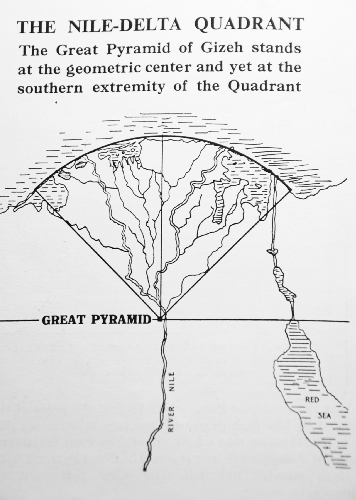 I am certainly not the originator of this information. Indeed, many people have come to the same conclusion that the Great Pyramid fits the descriptions given in Isaiah 19. Among such people, I found the following information from an on-line Prophecy Analysis article to be quite interesting:
I am certainly not the originator of this information. Indeed, many people have come to the same conclusion that the Great Pyramid fits the descriptions given in Isaiah 19. Among such people, I found the following information from an on-line Prophecy Analysis article to be quite interesting:
In ancient times, the Great Pyramid was at the boundary where the cultivated land touched the desert. This plateau was called Giza, or Gizeh (an Arabic word for the edge or border). Interestingly, the Great Pyramid of Giza is located in the precise center of all the land area of the world, equally dividing the earth (the 31 degrees 9 minutes meridian east of Greenwich is the longest land meridian, or longitude, and the 29 degrees 58 minutes 51 seconds north latitude is the longest latitude.
Additional information regarding the geographical location can be found on the "Decoding Pyramid" page here.
The analysis continues:
The original Old Testament was written in Hebrew. Each Hebrew alphabet letter, or lexicon, also has a corresponding number. Therefore, this scripture has a corresponding numeric value.
Isaiah 19:19 (Hebrew):
ביום ההוא יהיה מזבח ליהוה בתוך ארץ מצרים ומצבה אצל־גבולה ליהוה׃
Isaiah 19:20 (Hebrew):
והיה לאות ולעד ליהוה צבאות בארץ מצרים כי־יצעקו אל־יהוה מפני
לחצים וישלח להם מושיע ורב והצילם׃
Using the following conversion table of Hebrew alphabet and assigned values,
Reading the Hebrew right to left (as Hebrew is read), the combined value of these letters/lexicons equal as follows:
2 + 10 + 6 + 40 + 5 + 5 + 6 + 1 + 10 + 5 + 10 + 5 + 40 + 7 + 2 + 8 + 30 + 10 + 5 + 6 + 5 + 2 + 400 + 6 + 20 + 1 + 200 + 90 + 40 + 90 + 200 + 10 + 40 + 6 + 40 + 90 + 2 + 5 + 1 + 90 + 30 + 3 + 2 + 6 + 30 + 5 + 30 + 10 + 5 + 6 + 5 + 6 + 5 + 10 + 5 + 30 + 1 + 6 + 400 + 6 + 30 + 70 + 4 + 30 + 10 + 5 + 6 + 5 + 90 + 2 + 1 + 6 + 400 + 2 + 1 + 200 + 90 + 40 + 90 + 200 + 10 + 40 + 20 + 10 + 10 + 90 + 70 + 100 + 6 + 1 + 30 + 10 + 5 + 6 + 5 + 40 + 80 + 50 + 10 + 30 + 8 + 90 + 10 + 40 + 6 + 10 + 300 + 30 + 8 + 30 + 5 + 40 + 40 + 6 + 300 + 10 + 70 + 6 + 200 + 2 + 6 + 5 + 90 + 10 + 30 + 40 = 5,449 totalThe clincher, and amazing fact, is that the Great Pyramid of Giza's height, in Pyramid inches equals 5,449 inches (to the original summit platform)!
This is too amazing to be coincidental. For clarification, 25 Pyramid inches = 25.0265 British inches. The builders' unit of measure for the construction of the Great Pyramid was the Egyptian Royal Cubit, with the Sacred Cubit being used as the predominate linear unit which equals 25 Pyramid inches.The distance from the Pyramid's entrance through to the furthest point of the inside passages and chambers is also equal to 5,449 inches.
Sourced from: http://prophecyanalysis.org/archeologyandbible.htm#Isaiah19x
In another related article on that same site, the author states:
Since the full official name of the Pyramid, the Great Pyramid of Giza, means, in English, the Great Pyramid of the Border, the answer to the apparently contradictory definition of Isaiah is found in the Great Pyramid. The only spot on the face of the earth that completely answers this description, both geometrically and geographically, is the precise place where the Great Pyramid actually stands.
There are many other on-line articles and authors who have made extensive notes along similar lines. I'll leave it to you to dig deeper. Suffice it to say, I'm quite convinced that the Great Pyramid fits the description of Isaiah 19:19,20. The question I have had however, is why there? Why this specific spot? Yes, it is the center of the geographical land mass of the planet. Yes, its various measurements tell the story of this planet and its place in the cosmos. I get all that, but could there be something else special about this particular spot on the Earth?
Could there also be something special about this time in all of human history, wherein we are able to really dig deeper into the mysteries of the Great Pyramid? Think about it: Only in this day and age are we able to figure out how all of the various measurements of the Great Pyramid fit the measurements of Earth and its place in the solar system/galaxy/universe. Thanks to modern technology, we can investigate the Great Pyramid from just about every angle, and the more scientists and archaeologists study the thing the more they are amazed at what it represents. In fact, there is a short-lived video series on Netflix called, The Pyramid Code that suggests some very interesting possible reasons for why the Pyramids of the "Band of Peace" were constructed and for what purpose. I found Episode 2: High Level Technology particularly fascinating. In this day and age, we can also compare what we learn from the pyramids with other things such as the information we are gaining through various instruments and space probes, which can now accurately measure the Earth, sun, moon and stars. So, if indeed the Great Pyramid is the monument of Isaiah 19, it now can indeed truly testify of YHWH in many ways!
From this point on, I am going to engage in sheer speculation. Basically, I'm just going to "think out loud" here for a while, so please don't take any of this as "gospel truth." I am seeking answers myself and these are just some of the conclusions I've been coming to as a result of my research...
As far as I know, what I am about to suggest next originated within my own mind. I've not read, heard nor seen anything concerning the following ideas from anyone else. In recent years, I began to wonder, what if this "monument" is placed there - at that specific location - as a marker for a significant event... such as the creation of Adam?
In Chapter 3 of his book, The Pursuit of God, A.W. Tozer writes:
Having therefore, brethren, boldness to enter into the holiest by the blood of Jesus.
- Heb. 10:19
Among the famous sayings of the Church fathers none is better known than Augustine's, "Thou hast formed us for Thyself, and our hearts are restless till they find rest in Thee."
The great saint states here in few words the origin and interior history of the human race. God made us for Himself: that is the only explanation that satisfies the heart of a thinking man, whatever his wild reason may say. Should faulty education and perverse reasoning lead a man to conclude otherwise, there is little that any Christian can do for him. For such a man I have no message. My appeal is addressed to those who have been previously taught in secret by the wisdom of God; I speak to thirsty hearts whose longings have been wakened by the touch of God within them, and such as they need no reasoned proof. Their restless hearts furnish all the proof they need.
God formed us for Himself. The Shorter Catechism, "Agreed upon by the Reverend Assembly of Divines at Westminster," as the old New-England Primer has it, asks the ancient questions what and why and answers them in one short sentence hardly matched in any uninspired work. "Question: What is the chief End of Man? Answer: Man's chief End is to glorify God and enjoy Him forever." With this agree the four and twenty elders who fall on their faces to worship Him that liveth for ever and ever, saying, "Thou art worthy, O Lord, to receive glory and honour and power: for thou hast created all things, and for thy pleasure they are and were created."
God formed us for His pleasure, and so formed us that we as well as He can in divine communion enjoy the sweet and mysterious mingling of kindred personalities. He meant us to see Him and live with Him and draw our life from His smile. But we have been guilty of that "foul revolt" of which Milton speaks when describing the rebellion of Satan and his hosts. We have broken with God. We have ceased to obey Him or love Him and in guilt and fear have fled as far as possible from His Presence.
Yet who can flee from His Presence when the heaven and the heaven of heavens cannot contain Him? when as the wisdom of Solomon testifies, "the Spirit of the Lord filleth the world?" The omnipresence of the Lord is one thing, and is a solemn fact necessary to His perfection; the manifest Presence is another thing altogether, and from that Presence we have fled, like Adam, to hide among the trees of the garden, or like Peter to shrink away crying, "Depart from me, for I am a sinful man, O Lord."
So the life of man upon the earth is a life away from the Presence, wrenched loose from that "blissful center" which is our right and proper dwelling place, our first estate which we kept not, the loss of which is the cause of our unceasing restlessness.
The whole work of God in redemption is to undo the tragic effects of that foul revolt, and to bring us back again into right and eternal relationship with Himself. This required that our sins be disposed of satisfactorily, that a full reconciliation be effected and the way opened for us to return again into conscious communion with God and to live again in the Presence as before. Then by His prevenient working within us He moves us to return. This first comes to our notice when our restless hearts feel a yearning for the Presence of God and we say within ourselves, "I will arise and go to my Father." That is the first step, and as the Chinese sage Lao-tze has said, "The journey of a thousand miles begins with a first step."
The interior journey of the soul from the wilds of sin into the enjoyed Presence of God is beautifully illustrated in the Old Testament tabernacle. The returning sinner first entered the outer court where he offered a blood sacrifice on the brazen altar and washed himself in the laver that stood near it. Then through a veil he passed into the holy place where no natural light could come, but the golden candlestick which spoke of Jesus the Light of the World threw its soft glow over all. There also was the shewbread to tell of Jesus, the Bread of Life, and the altar ,of incense, a figure of unceasing prayer.
Though the worshipper had enjoyed so much, still he had not yet entered the Presence of God. Another veil separated from the Holy of Holies where above the mercy seat dwelt the very God Himself in awful and glorious manifestation. While the tabernacle stood, only the high priest could enter there, and that but once a year, with blood which he offered for his sins and the sins of the people. It was this last veil which was rent when our Lord gave up the ghost on Calvary, and the sacred writer explains that this rending of the veil opened the way for every worshipper in the world to come by the new and living way straight into the divine Presence.
Everything in the New Testament accords with this Old Testament picture. Ransomed men need no longer pause in fear to enter the Holy of Holies. God wills that we should push on into His Presence and live our whole life there. This is to be known to us in conscious experience. It is more than a doctrine to be held, it is a life to be enjoyed every moment of every day.
- A.W. Tozer, The Pursuit of God, excerpt from Chapter 3 [emphasis mine]
Remember, Isaiah says that there is an "altar" there in Egypt. An altar as Webster defines it is something, "which serves as a center of worship or ritual." As noted earlier, the Great Pyramid is the center of the geographical land mass of the planet:
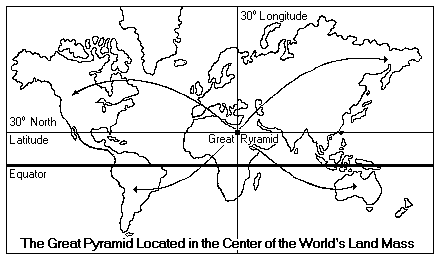
If the answer to the first question of the Westminster Shorter Catechism is correct (and I believe it is), then YHWH created a being in His own image and likeness for the sole purpose of worship and fellowship with Him in unity and mutual love. Thus, if my thesis is correct, then Adam was created at this location, at the literal center of the world, which in turn was to worship and glorify YHWH. Surely, that "center of worship" would be a logical location for YHWH to form man. Consider also, the shape of the Egyptian Nile delta area:
If we were to think of Earth as a "mother" like so many cultures do, then this location, being at "her" center, has the appearance of the pubic area, with the Giza plateau being located at the birth canal. I've thought this for quite some time, though I have never read anything that would insinuate the same until literally two days ago. When I was writing my critique on Patrick Heron's book, Nephilim and the Pyramid of the Apocalypse for Part 1 in this series, I mentioned something he had quoted from Graham Hancock, which drew me to discover that I also had Hancock's book sitting on my bookshelf. Though I had never read it before, I spent hours reading through it that night. That was when I found what I considered to be confirmation for what I thought was my own independent theory... and it was even on the same page that Patrick was quoting from!
We are told that this lost domain, the 'Homeland of the Primeval Ones', was 'an island which, in part, was covered with reeds and stood in darkness in the midst of the primeval water...' [*] We are told that 'the creation of the world began on this island, and that it was here that 'the earliest mansions of the gods were founded.' [**] At a certain point during the primeval age, however, this blessed 'former world' was overwhelmed, suddenly and totally, by a great flood, the majority of its 'divine inhabitants' were drowned and the 'mansions of the gods were inundated'.[***]
- Graham Hancock, Heaven's Mirror: Quest for the Lost Civilization
, page 66 [emphasis mine]
On the following page Hancock continues with a quote from the late Dr. Eve Reymond of Liverpool University:
"The Edfu tradition, and so perhaps the tradition of many other temples, evidently looked on this far-distant temple as the work of the gods themselves in which the creation of the Earth was completed." [**** ]
- Graham Hancock, quoting Reymond in Heaven's Mirror: Quest for the Lost Civilization, page 67 [4]
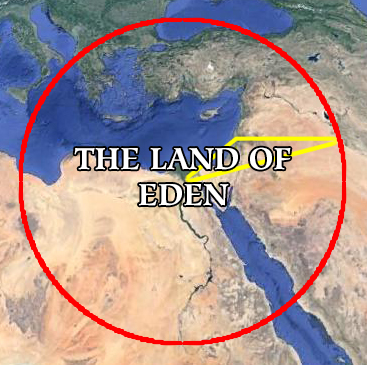 While Hancock never comes right out and says, "This is where Adam was believed to have been formed..." he does make other similar references indicating a belief that this was not only the center of the world, but also essentially its "naval" - the place from which Creation began. Indeed, he also mentions the beliefs of other people groups around the world who associated their sacred pyramid sites as the "naval" of the world, or the place from which Creation began. Ingrained into the global collective memory of ancient civilizations, there seems to be an intimate connection between the pyramid structure and Creation itself. So again, I ask, could Giza be where our Heavenly Father formed the first man? Assuming it is, this would make Egypt a "special place" wherein YHWH formed man in His own image and likeness. Thus, I believe Giza is not only the center of the world, but I believe it may have been the center of the region known as Eden, within which we find the Yahuwah Triangle (I will address this further in the next blog).
While Hancock never comes right out and says, "This is where Adam was believed to have been formed..." he does make other similar references indicating a belief that this was not only the center of the world, but also essentially its "naval" - the place from which Creation began. Indeed, he also mentions the beliefs of other people groups around the world who associated their sacred pyramid sites as the "naval" of the world, or the place from which Creation began. Ingrained into the global collective memory of ancient civilizations, there seems to be an intimate connection between the pyramid structure and Creation itself. So again, I ask, could Giza be where our Heavenly Father formed the first man? Assuming it is, this would make Egypt a "special place" wherein YHWH formed man in His own image and likeness. Thus, I believe Giza is not only the center of the world, but I believe it may have been the center of the region known as Eden, within which we find the Yahuwah Triangle (I will address this further in the next blog).
So God created man in his own image, in the image of God created he him; male and female created he them. - Genesis 1:27 (KJV)
Here, possibly on the Giza plateau, we have the beginning of humankind, created to be in fellowship with YHWH at the literal center of the earth. Could this in fact also be an altar in another sense - that of sacrifice? Well, when you consider the idea that YHWH knew from the very beginning that He would have to sacrifice His only begotten Son (the second Adam), in a way I would have to say that it is.
And the Lord God formed man of the dust of the ground, and breathed into his nostrils the breath of life; and man became a living soul. - Genesis 2:7 (KJV)
From the moment Adam was created from the dust of the ground, the plan for future redemption was already set in motion.
And all that dwell upon the earth shall worship him, whose names are not written in the book of life of the Lamb slain from the foundation of the world. - Revelation 13:8 (KJV)
We often think of "foundation" as in "the beginning" but could it also be the "bedrock" of the world? The Greek word used for "foundation" is καταβολῆς - "katabolé" - Strongs # 2602 - defined as:
(a) foundation, (b) depositing, sowing, technically used of the act of conception.
Considering the above definitions for this word, I do not think it is at all unreasonable then to suggest that the Second Adam was literally planned to be slain from the very moment of the First Adam's "conception/depositing" in/from the dust of Egypt's foundational bedrock. Indeed, the book of Revelation also makes a connection between the Lamb's sacrifice and Egypt:
And their dead bodies shall lie in the street of the great city, which spiritually is called Sodom and Egypt, where also our Lord was crucified. - Revelation 11:8 (KJV)
It is not within the scope of this writing to go into Jerusalem's connection with Sodom, but is not the connection with Egypt interesting? Even more so, when considering the possibility of the Giza plateau as an "altar." And if indeed the Great Pyramid is located where I believe it is for this reason, then it certainly serves as a "matstsebah" monument - especially of sacred stones or pillars in connection with an altar, erected as a memorial to an amazing event.
 When you consider the idea that YHWH likens our relationship to Him as that of marriage, then as the Bride of the King, we would be considered a queen. Is it just a coincidence that the inside of the Great Pyramid has a King's Chamber, a Queen's Chamber and a "pit" that drops down from the entrance to the Grand Gallery? It's as if, we are given a picture of the choice we have to make before entering the presence of the King. If we choose marriage, we are granted access to both the Grand Gallery and the King's/Queen's Chambers. If we reject the proposal, we go down into the pit! Look again, at the picture to the right. See where the "pit" ends up, when superimposed on the Earth? It aligns with what would be the bottom of the core of the Earth!
When you consider the idea that YHWH likens our relationship to Him as that of marriage, then as the Bride of the King, we would be considered a queen. Is it just a coincidence that the inside of the Great Pyramid has a King's Chamber, a Queen's Chamber and a "pit" that drops down from the entrance to the Grand Gallery? It's as if, we are given a picture of the choice we have to make before entering the presence of the King. If we choose marriage, we are granted access to both the Grand Gallery and the King's/Queen's Chambers. If we reject the proposal, we go down into the pit! Look again, at the picture to the right. See where the "pit" ends up, when superimposed on the Earth? It aligns with what would be the bottom of the core of the Earth!
Israel is the Bride of the Lamb. The New Jerusalem, defined in the 21st chapter of Revelation as the Bride, is (most likely) in the shape of a pyramid. Considering it is estimated that the number stones making up the Great Pyramid is about 2.3 million, is it just a coincidence that the estimated number of Israelites who left Egypt at the time of the Exodus was about the same (2.5 million)? While not exact, we must acknowledge that both numbers are rough estimates, as no one has actually counted every stone, nor every Israelite man, woman and child during the Exodus. Still, is it not interesting that even while guessing, the number of cut stones in the Pyramid may be equal to the number of "living stones" who left the home of the Pyramid?
Consider also that the Great Pyramid had 144,000 brightly shining casing stones. Is this also just a coincidence?
1 And I looked, and, lo, a Lamb stood on the mount Sion, and with him an hundred forty and four thousand, having his Father's name written in their foreheads.
2 And I heard a voice from heaven, as the voice of many waters, and as the voice of a great thunder: and I heard the voice of harpers harping with their harps:
3 And they sung as it were a new song before the throne, and before the four beasts, and the elders: and no man could learn that song but the hundred and forty and four thousand, which were redeemed from the earth.
4 These are they which were not defiled with women; for they are virgins. These are they which follow the Lamb whithersoever he goeth. These were redeemed from among men, being the firstfruits unto God and to the Lamb.
- Revelation 14:1-4 (KJV)
Does the Great Pyramid serve as a visual representation of our future marriage, of the firstfruits redeemed unto YHWH, of the plan of salvation and the New Jerusalem? Stay tuned as we continue to unlock the mysteries of The Yahuwah Triangle!
The following blog will deal with the next point in Defining the Yahuwah Triangle...
Were you blessed by this information? If so, please consider contributing toward our on-going research efforts. Of course, there is no pressure, but for those so inclined to give, your support is greatly appreciated. We are only able to do this sort of thing for free because of the faithful support of people like you. If you prefer not to donate on-line, please send contributions to: King's Gate Media Please note, we are NOT a 501c3, which means our message is not regulated by the government, |
For more concerning this information, be sure to check out these related products: |
||||||||||
o |
||||||||||
|
||||||||||
If you have enjoyed reading this blog series, be sure to check out these other related products: |
|||||
|
The SUPER Collection |
Mythology and the Coming Great Deception |
The Mount Hermon |
Double Feature! Get both DVDs |
MP3 Files Blog Audio: Includes more than 15 hours of audio! |
MP3 Files Revolutionary Radio: Supernatural Collection Includes more than 15 hours of audio! |
| $50 | $20 | $20 | $35 | $20 | $20 |
- Vyse, H. (1840) Operations Carried on at the Pyramids of Gizeh in 1837: With an Account of a Voyage into Upper Egypt, and an Appendix. Vol I. London: James Fraser, Regent Street. [back]
- For the whole story, see: http://www.pbs.org/wgbh/nova/ancient/who-built-the-pyramids.html [back]
- http://biblehub.com/commentaries/pulpit/isaiah/19.htm [back]
- The following footnotes are from footnotes found in Graham Hancock's book, Heaven's Mirror: Quest for the Lost Civilization for the paragraphs I quoted:
* E. A. E. Raymond, The Mystical Origen of the Egyptian Temple, Manchester Universtity Press, 1969 p. 55
** Ibid
*** Ibid p. 109, 113-114, 127
**** Ibid p. 231 [back]
The information presented in this blog is part of the e-book series:
|
|||
This e-book series is designed to explore many of the themes, concepts and ideas that will be in our forthcoming sci-fi series SEED. Thus, you might think of it as the non-fiction behind the fiction. To navigate this series, use the slide-out BLOG MENU to the left. Keep in mind that this is a work in progress. As such, each blog (chapter) is subject to change, modification and in some cases a complete re-write as I receive feedback, criticism and new revelation in my research. When I am fairly satisfied with what I have written, I will record myself reading the blog for your benefit. Whenever audio is available, you can listen as you read by clicking on the embedded audio player below each blog's title or by clicking here to bring up the all in one audio player. If I have not recorded a particular blog in audio format, it probably means I am not finished writing and/or editing it. When I feel it is ready, I will record it on my supplemental radio show, The Revolutionary Radio Project on BlogTalkRadio.com.
You can also check out our SEED promotional page to have another resource for posting on Facebook and other social networking sites. Your support is greatly appreciated! A note from the author: This work represents some of my research, thoughts and ideas regarding history and the End Times. Do not take anything I write as the "Gospel Truth." I encourage you to be a “good Berean” and study these things out for yourself to come to your own conclusions. DISCLAIMER: While I do believe that the books contained in The Holy Bible were Divinely inspired and written by men, I do not necessarily hold to the idea that only the 66 books we now have in our (Protestant) Bibles are the sole Divinely inspired books of antiquity. For instance, the King James Version (on which I was raised) used to have 80 books in it. Today, we only have 66. Many editions of the Bible throughout the centuries contained or left out different books. God will not contradict Himself. Therefore, the fact that there have been so many different "canons" of Scripture over the centuries proves to me that the acquisition and accumulation of Scripture has not always been Divinely inspired. I also do not believe that any one version of our English Bible is 100% correct and accurate in its TRANSLATION. Granted, some are better than others. But Hebrew, Greek and Aramaic are all very complex languages and it is often hard for English as a language to do the text justice. Thus, I find that comparing different English translations can help show us a variety of ways of looking at what was originally written. I am mentioning this because throughout this series of blogs I will be referencing different versions of English Bibles as well as taking a look at some of the books not currently considered "canon" in our (Protestant) Bibles. Having grown up in a "KJV only" environment, I felt the need to say this up front. I pray that does not hinder you in any way and that this series of blogs is interesting, enlightening and encouraging to you. |
Were you blessed by this information? |



